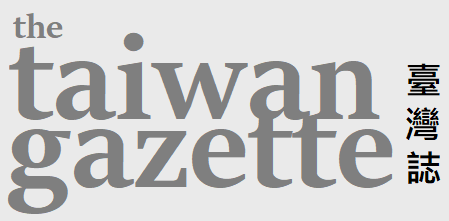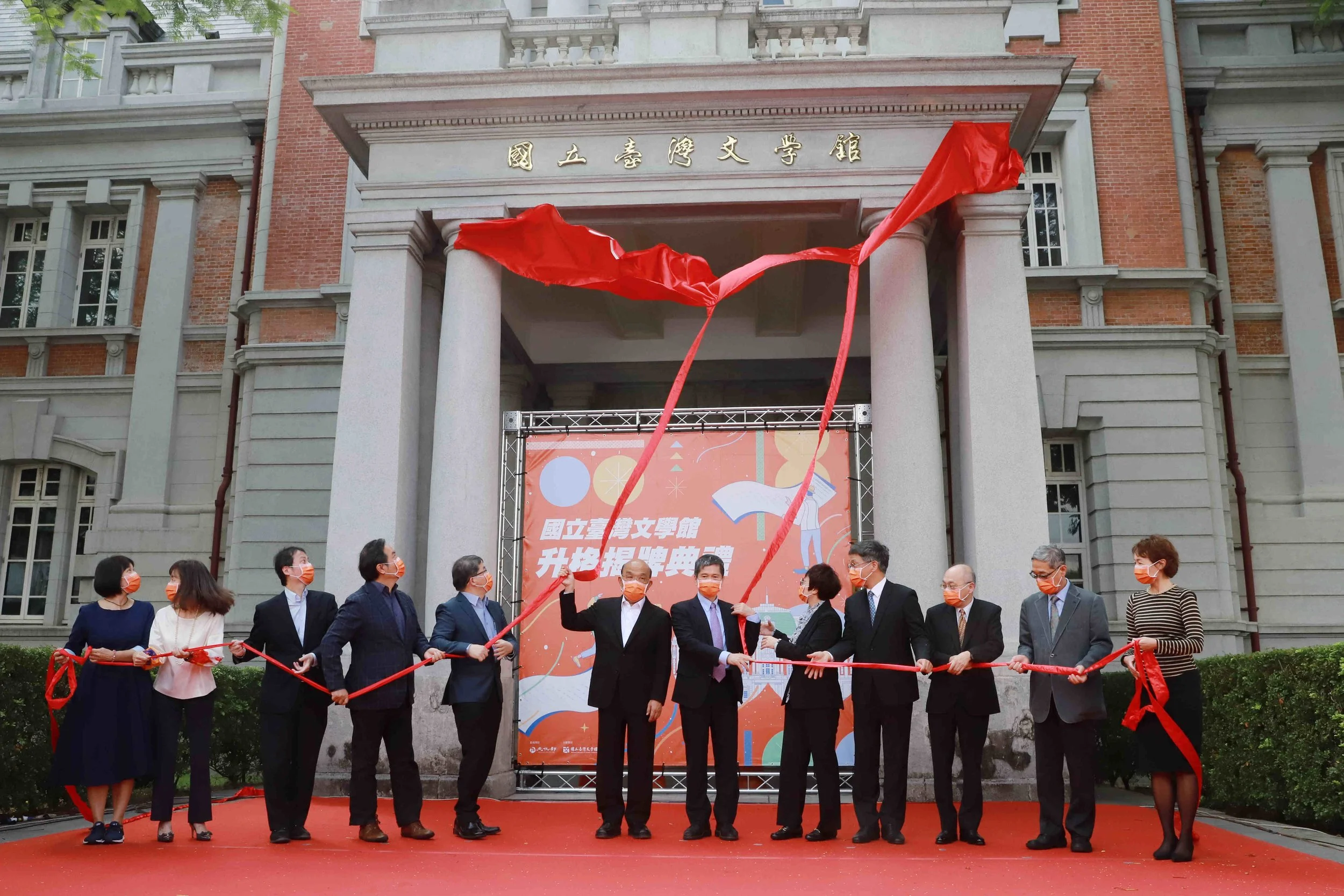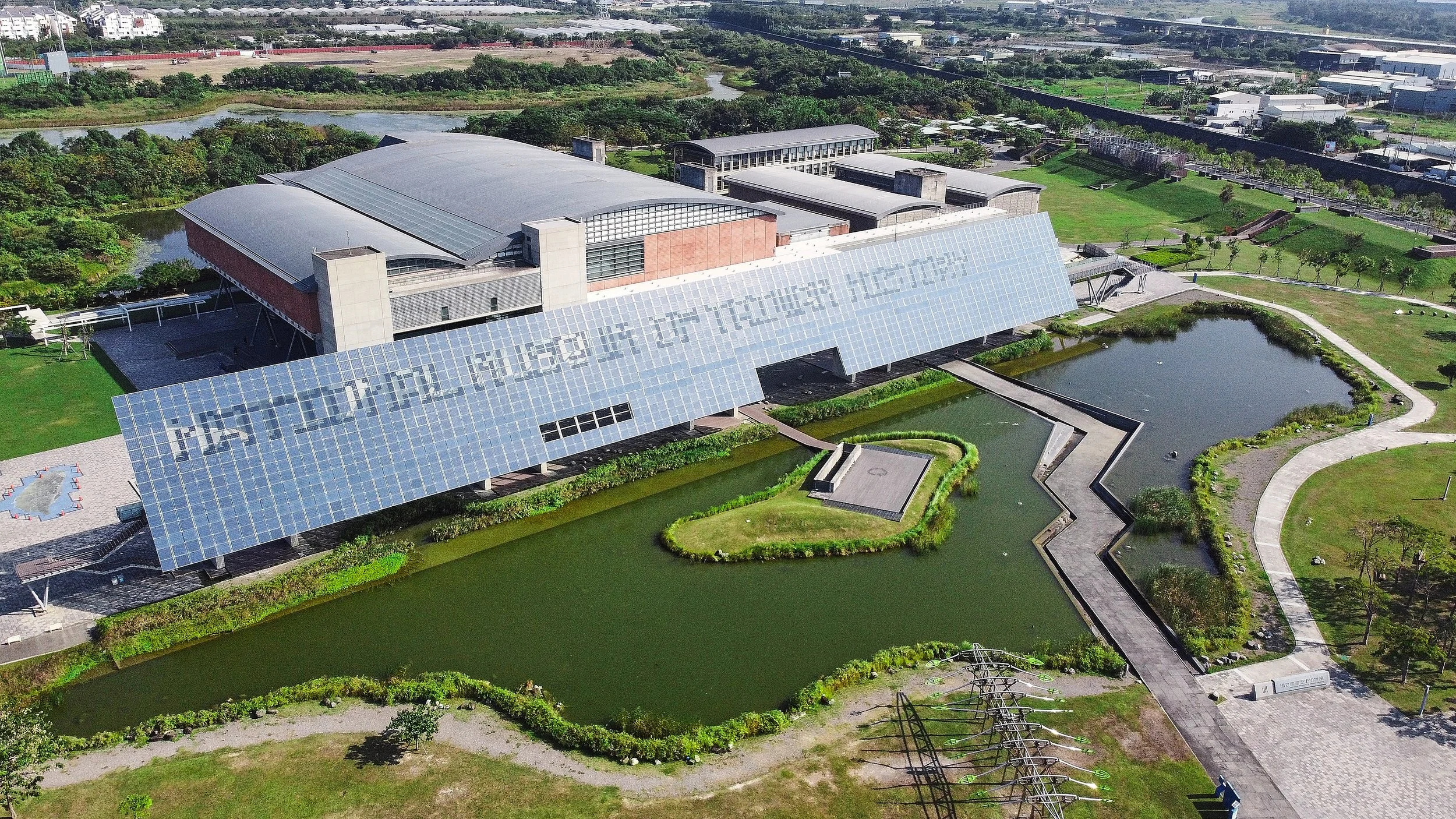The Future of Taiwan Literature: An Interview with Shuo-bin Su (Part 2)
“Taiwan literature can be conceived of as every single mode of literary expression that has left an existential trace on Taiwan,” said Dr. Shuo-bin Su (蘇碩斌), director of the National Museum of Taiwan Literature. The research, preservation, and promotion of such modes of expression, however, either failed to receive organized institutional support or was subsumed under a China-centered historiographical perspective before the lifting of martial law in Taiwan. The establishment of Taiwan literature as a field of academic inquiry became possible thanks to the political liberalization of Taiwanese society and the emergence of a “Taiwan consciousness” since the 1980s. What might be the challenges and possibilities facing the field of Taiwan literature, then and now? What might be the new directions of the field?
The Taiwan Gazette is pleased to interview Dr. Shuo-bin Su to discuss the historical formation of the field of Taiwan literature and the role the National Museum of Taiwan Literature (NMTL) will play in introducing Taiwan literature to domestic and international visitors.
Dr. Shuo-bin Su is Director of the National Museum of Taiwan Literature (October 2018 to the present) and Professor at the Graduate Institute of Taiwan Literature, National Taiwan University. He received his Ph.D. in Sociology from National Taiwan University. His research areas of specialization include sociology of literature, cultural studies, and book history. He is the author of the book The Invisible and Visible Taipei which explores the birth of modern Taipei City, and he has also translated several works of Japanese cultural studies scholarship into Chinese, including Invitation to Media Cultural Studies and Politics of Seeing: A Social History of the Expositions from 1851 to 1970. In recent years, he endeavors to promote “creative nonfiction writing” and is the chief editor of some award-winning publications about Taiwan’s historical stories including The Day When the War Ended: Stories of the War Generation in Taiwan and A Guide to the Lifestyle of Taipei Cultural Youths that Was Fashionable for One Hundred Years.
This interview is published in two parts. Part 1 will focus on the formation of Taiwan literature as an academic field of study; Part 2 will concentrate on the founding of the NMTL and how the museum will establish its connections to a Taiwanese and international readership.
This interview was conducted online in Chinese on November 3, 2021. Its English translation has been edited for clarity. It features as part of our special issue: Encountering Everyday Life: Taiwan in Museums.
Interviewed by Matthew Mucha
Transcribed and translated by Sabrina Teng-io Chung
Edited by Yu-Han Huang, Sabrina Teng-io Chung, and Matthew Mucha
Cover Image: The National Museum of Taiwan Literature
Taiwan Gazette: Next, we wish to proceed with a set of questions related to the National Museum of Taiwan Literature (NMTL). The Planning Office of the Museum was opened in 2003. Before that, how were the literary works of Taiwanese authors preserved? How did existing organizations or museums contribute to those preservation efforts? What might be the significance of the founding of the NMTL?
Shuo-bin Su: Perhaps it is important to note that prior to the political liberalization of Taiwan, there were virtually no organized attempts to collect and preserve the important works of Taiwanese writers. Worse still, such attempts were considered a taboo. A notable case in point is related to the works of Lü Heruo (呂赫若; Lu Heruo), a very prominent figure in colonial Taiwan’s literary scene. Because of his participation in underground leftist organizations after the 228 Incident, he was wanted by the KMT government and forced to flee. During his escape, his family destroyed the original manuscript of his works, wiping out their traces. This is indeed a tragic story to recount. We need to understand that the preservation of Taiwan literary productions was difficult, if not impossible, under a repressive socio-political climate. Without the popularization of a Taiwan-centered consciousness, preservation efforts could only be made in a sporadic manner at best.
It was during the democratization period in the 1990s that Taiwanese society began to recognize the significance of preserving the manuscripts and works of Taiwanese writers. For example, the founding of the Chung Li-he Memorial Museum (鍾理和紀念館) and the Lai He Memorial Museum (賴和紀念館) became possible thanks to the resources made available and organized by the descendants of the respective writers. In addition to these few private memorial museums, some school libraries also contributed to the collection and preservation of artifacts and objects related to Taiwan literature.
Simply put, preservation efforts at the national level did not exist prior to the opening of the Planning Office of the National Museum of Taiwan Literature (NMTL) in 2003. The NMTL is the first and only national-level museum dedicated to the research, collection, preservation, promotion, and exhibition of the literary productions of Taiwan, including an author’s manuscript, letters, the only extant copy of a work, and more. Its collection resources, storage facilities, and professional services are the finest in Taiwan—the scope of which exceeds the capacities of private memorial museums, county-level museums, school libraries, and other organizations. In terms of our preservation efforts, we provide on-going support and consultation services to, say, descendants of writers who wish to preserve relevant artifacts at home or other private premises. We might also recommend the donation of a said item to our museum collection if the preservation condition of a private premise is far from ideal. At present, the NMTL has partnership with 33 medium and small-sized literature museums across Taiwan, providing support in terms of technical services. These museums include county-level institutions such as the Taichung Literature Museum (臺中文學館), the Kaohsiung Literary Museum (高雄文學館), and the Museum of Nantou County Literature Document (南投縣文學資料館) where the works of Tân Tshian-bú (陳千武; Chen Qian-wu) is housed. We also collaborate with the aforementioned memorial museums preserving the works of Loā Hô (賴和; Lai He) and Tsûng Li-fô (鍾理和; Chung Li-he).
Taiwan Gazette: Could you share with us the planning processes culminating in the establishment of the museum in 2003? Also, in 2021, the museum received an administrative upgrade from Taiwan’s Ministry of Culture. What might be the implication of these changes? What modifications will these changes make on the museum, especially in terms of its future development? In what ways do these changes resonate with the centennial of the Taiwan Cultural Association?
Shuo-bin Su: The plan to build a museum of Taiwan literature was the result of many rounds of discussion. Issues related to the museum building, source of funding, administrative status, and more had to be evaluated. In 1997, the current building housing the NMTL was under restoration. It was built in 1916 by the Japanese architect Moriyama Matsunosuke (森山松之助), who also designed the current Presidential Office Building in Taipei, to house the Tainan Prefectural Government. After World War II, the building was used by the KMT government for military purposes. It remained the seat of the Tainan City Government from 1969 to 1997. At its restoration phase, the building was chosen as the future site of the NMTL. The museum opened its Planning Office in 2003 and was formally established in 2007. In 2021, it received an administrative elevation from the Ministry of Culture to become a third-level agency. This elevation suggests that the NMTL has reached a certain degree of accomplishment from 2003 to 2021.
With this administrative elevation, the NMTL will receive an increase of government support in terms of human resources and funding. But the true significance behind this elevation is that: the history and literature of Taiwan has ascribed the same level of importance as that of China. The Taiwanese government is placing our museum, together with the National Museum of Taiwan History (國立臺灣歷史博物館), on the same footing with museums that are organized around a China-centered perspective. These museums include the Chiang Kai-shek Memorial Hall (中正紀念堂), the National Sun Yat-sen Memorial Hall (國父紀念館), the National Museum of History (國立歷史博物館), and others.
From the perspective of our museum, the administrative elevation allows us to set new goals. In the past, our museum had focused on the research, collection, and preservation of artifacts related to Taiwan literature and Taiwan literary historiography. At present, we can mobilize our existing resources and network to build connections with contemporary society. These include the reinterpretation of Taiwan literature, making new stories out of existing materials. We wish to engage the public in an ongoing dialogue, deepening their understanding of Taiwan literature through exhibit curations, book publications, games design, goods design, literature awards, and more.
This year (2021), we are commemorating the centennial of the founding of the Taiwan Cultural Association (臺灣文化協會; TCA). The NMTL opened its door to the public on October 17, the date on which the TCA was founded. We picked this date because the founding of the TCA marked a watershed moment in the practice of literary production in Taiwan. It was to the literary arts column of The Taiwan Minpao (《臺灣民報》), a newspaper published by the TCA in 1923, that writers began to submit works of serial fiction. Prior to the publication of serial fiction on Minpao, classical Chinese prose and poetry were the prevalent modes of literary expression in Taiwan. Starting from 1924, modern fiction began to emerge in Taiwan thanks to the contribution of Minpao. The founding of the TCA set a new milestone for the Taiwan New Cultural Movement, a new beginning for Taiwan New Literature. It is a moment of unparalleled historical significance to our museum.
Taiwan Gazette: Could you speak a little bit more about the museum’s engagement with the public? How does it achieve this purpose through its curatorial practice, permanent exhibition, and special exhibitions?
Shuo-bin Su: Our new permanent exhibition is organized around the historiography of Taiwan literature. We have incorporated in our exhibition narrative works that were previously marginalized by the literary canon—including the literary productions of Indigenous populations, as well as the popular writings of romance novels and martial arts novels. On the other hand, we also seek to direct attention to Pe̍h-ōe-jī literature, or works written in the vernacular Taiwanese language. The title of our exhibition is called “The Power of Literature: Writing Our Taiwan” (《文學力—書寫LÁN臺灣》). In its Chinese title, the romanticized character “LÁN” is used instead of the Mandarin Chinese characters “我們” to signify the possessive personal pronoun “our.” Doing so, we wish to foreground the importance of the Pe̍h-ōe-jī tradition in Taiwan’s literary historiography. In short, our permanent exhibition aims at weaving together the diverse literary expressions that have existed in Taiwan, drawing attention to the power of literature.
As for our special exhibition, we have two on view at the moment. One is titled “A Century of Heartfelt Sentiment: 100th Anniversary of the Taiwan Cultural Association” (《百年情書.文協百年特展》). “Cultural enlightenment” is the organizing concept of this special exhibition. Taiwanese intellectuals affiliated with the TCA including Tsiúnn Ūi-súi (蔣渭水; Chiang Wei-shui), Lîm Hiàn-tông (林獻堂; Lin Xian-tang), Lí Ing-tsiong (李應章; Li Ying-Zhang), Loā Hô (賴和; Lai He), and others had sought resistance from Japanese colonial rule by means of cultural enlightenment. They wished to raise the literacy rate, cultivate aesthetic appreciation, and encourage literary self-expression among the ordinary Taiwanese people. Our special exhibition aims to commemorate such a pursuit, calling those intellectuals’ attempts to “pursue” the people “a century of heartfelt sentiment.”
In the 1920s and 1930s, these intellectuals had attempted to enlighten the people through various means, including organizing film screenings and public speeches, newspaper and fiction publication, reading groups, theater plays, and more. Their pursuit of self-determination and democracy was cut short by the Japanese colonial government and later broken off by the KMT’s martial law regime starting in the postwar era. In other words, these intellectual’s pursuit marks a century-long journey that did not reach its goal until the 1980s. At our special exhibition, we seek to commemorate the reverberation of the colonial-era intellectual’s “heartfelt sentiments” for democracy, national self-determination, and cultural enlightenment throughout the past century.
Another special exhibition is titled “Reading Sexualities: The Many Faces of Gendered Literature in Taiwan” (《可讀·性—臺灣性別文學變裝特展》). In this exhibition, we focus on the shifting meanings of gender roles in Taiwanese society. From the Qing ruled period, there have been ghost stories related to female retribution. During the Japanese colonial period and postwar era, stories related to the gendered processes of everyday life became more diversified. We have edited, rewritten, and compiled both written and visual contents of the special exhibition into a book with the hope of promoting it further to our public audience.
Taiwan Gazette: Could you further discuss the museum’s engagement with the public in terms of its institutional promotion of literary translation? We know that aside from its main building in Tainan, the NMTL has opened a branch in Taipei. What might be their differences in terms of services and functions?
Shuo-bin Su: Compared to our main building in Tainan which has around 177,915 square feet, the Taipei Branch, which we call the “Taiwan Literature Base” (TLB), has only the size of 10,675 square feet. As part of our museum’s outreach program, the TLB is used to host small-scale activities related to Taiwan literature, targeting audiences from northern Taiwan. We are also restoring another building of a similar size, hoping to open it to the public in two years’ time. We plan to use it as a new venue to promote interdisciplinary collaborations between Taiwan literature and other fields of art, including music, dance, theater, and contemporary art. As mentioned before, in the past, the NMTL’s major objective was the research, exhibition, and promotion of Taiwan literature. Our future plan is to further our museum’s collaboration with the outside world—both at home and abroad—and we hope to achieve this through our venues in Taipei.
The work of literary translation is carried out in Tainan. It is in fact one of our main projects. Partnering with the U.S. based publishing house Cambria Press, we have launched the “Literature from Taiwan Series.” At present, we have already published seven books in the series. In Japan, we have got four books published and will launch a new series this year. We are also overseeing other translation projects in Germany, France, the Czech Republic, Vietnam, and South Korea.
A committee is in charge of organizing eight pieces of literary works—mainly short fictions—around a selected theme for publication. For instances, our publications in the United States are organized around the themes of colonialism as well as queerness. In Germany, we have the White Terror as our organizing theme; in France, it is democratization; in the Czech Republic, ecological literature. We will direct our institutional support to the translation projects that editors-in-chief see fit for their respective countries. And we set college students as our targeted readers. We are hoping that course instructors can use our publications as course materials, teaching one book for a week or two in their classes. This translation initiative has been going on for the past three years, leading to the publication of around fifteen books in each country in which we have set up editorial committees.
Taiwan Gazette: Our last question concerns the NMTL’s ongoing efforts to promote the international exchange and translation of Taiwan literature. In what ways will such efforts contribute to Taiwan literature-related research, both at home and abroad?
Shuo-bin Su: Since its establishment, the NMTL has concentrated on the research, collection, preservation, and exhibition of Taiwan literature-related artifacts—objects that were once regarded as insignificant under a China-centered historiographical and canonical tradition. Slowly, we have been trying to foster a rich, amiable environment for the production of contemporary literature. In the future, we wish to promote Taiwan literature to the international market, broadening a global awareness that good stories do exist in Taiwan, and these stories are all relevant to the development of Taiwanese society, history, culture, and more. As I have already mentioned, in recent years, we have been trying to promote Taiwan literature through our translation initiative.
We have also invited important translators of Taiwan literature to visit Taiwan on a short-term basis. Some of these visits can last for a month, during which we will organize workshops and invite students doing translation studies in Taiwan to share and exchange their thoughts on the practice of literary translation. We will also provide them with further information about government-sponsored grants that can assist them with their translation projects. Such grants are also available to overseas translators in countries including Germany and many others. We are hoping to mobilize existing grant resources to promote Taiwan literature both at home and abroad. We also organize literature awards each year, hoping to promote Taiwan literature to international book fairs. A few copyright licensing agencies have also helped to secure the release of Taiwan literature in overseas markets. I believe the future of Taiwan literature lies not only in the hands of our museum and the people of Taiwan. It also belongs to the community of international readership.






